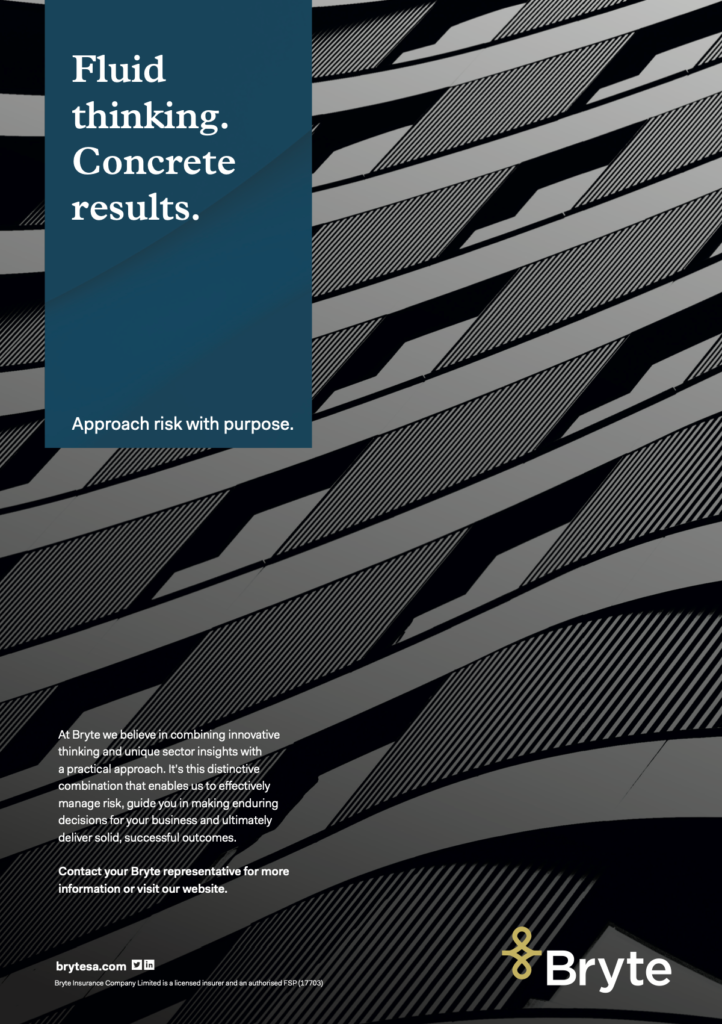Jacobus Brink, Head of Investments at Novare Holdings
Alternative investments offer an effective diversification tool to traditional assets like stocks and bonds in times of increased volatility.

Investors need to rethink diversification when constructing portfolios capable of enduring what will be another unpredictable and turbulent year for financial markets.
The landscape has already shifted from the one we’ve endured since the onset of the Covid-19 pandemic in March 2020. Inflation is running hot, interest rates are rising across the globe, and years of unprecedented monetary stimulus programs aimed at reflating economies will inevitably be unwound.
The extended run of cheap money is over. Since the global financial crisis, markets have become accustomed to record-low borrowing rates, massive capital injections through bond purchases by central banks, and fiscal-stimulus support measures from governments; all of which have propelled asset prices to record highs.
Now, questions linger over how high and how quickly interest rates will need to go up to curb a spike in inflation that caught the world’s most influential central banks off guard. Investors are also looking for signs from the U.S. Federal Reserve on how abruptly it will shrink its $9 trillion bond portfolio.
Officials at the European Central Bank have also pivoted. The Dutch central bank is leaning toward ending the ECB’s asset purchase program as soon as possible and sees an interest-rate hike in the fourth quarter. In early February, ECB President Christine Lagarde expressed concern about the direction of inflation and indicated a rate increase this year is possible, a reversal from a previous stance that this was unlikely.
Investors’ concerns that the Fed and the ECB might be behind the inflation curve – and fears that this will result in an aggressive tightening in monetary policy – has caused wild swings in asset prices. In January, an index measuring stock-market volatility jumped to the highest level since November 2020, indicating just how much uncertainty is baked into the minds of investors, analysts and economists.
To understand why to consider that the S&P 500 index has declined only twice on an annual basis since a 38% slump in 2008. After bubbling near record highs, the gauge is down more than 6% this year, even though broad valuations still seem stretched. Yields on benchmark 10-year U.S. Treasuries climbed to 1.93% on Feb. 4, levels last seen in December 2019. That’s almost four times higher than they were in March 2020, and more pressure could come from the Fed’s tapering of quantitative easing.
Investors are having to contend with the prospect of much higher borrowing costs and less liquidity while also considering potential threats from new Covid-19 strains and sporadic supply chain challenges – all contrasted against what promises to be robust yet uneven global economic growth.
This perplexing (and unfamiliar) investment environment calls for a fresh approach to simply spreading risks by buying stocks in different sectors, regions, stages of development, or sizes and tucking away a portion in fixed income and cash.
During periods of rising inflation and times of stress, the Henry Markowitz portfolio-diversification theory – a hypothesis developed in the 1950s that investors can design an optimal portfolio that maximizes returns by diversifying their investments – flies out the window. In these times, most asset correlation goes to one, meaning that prices move in lockstep with each other, and the diversification one so sorely needs is nullified.
Alternative assets offer an effective diversification tool and have a proven track record of achieving positive returns uncorrelated to markets or economies. These include hedge funds that take bets on what shares will rise or fall, profit from price differences in commodities, indices or currencies, or use leverage.
Unfortunately, when investors think of hedge funds, they imagine cowboys using impossible to understand tactics cloaked behind a veil of secrecy. This misperception lingers even though South Africa in 2015 became one of the first countries to regulate the industry and assets under management jumped by a record in 2020.
Apart from the wide-ranging strategies used by hedge funds, alternative assets also include private equity, real estate, and sustainable investments that consider environmental, social and governance issues.
An investment in an agricultural project to alleviate poverty, improve food security and foster long-term economic growth, for example, could form one component of a portfolio. The rest may include a private-equity fund invested in African real estate, a fund using advanced mathematical models to spot buying and selling opportunities, or even the financing of energy development. The possibilities are endless.
Strategists at JPMorgan Chase & Co. predict that alternative investments will return 11% in 2022, compared with 5% for stocks and bonds. BlackRock Inc., the world’s largest money manager, expects negative bond returns for 2022.
Determining which alternatives to include in a portfolio begins by setting a long-term strategic asset allocation goal, influenced by an investor’s return expectations and cash flow requirements. It’s then vital to ensure the right managers are picked and that they are given the ability to make short-term tactical changes to account for sudden changes or opportunities in market conditions.
An investor educated in the benefits of diversification is less likely to become snared in the panic or exuberance of the day, while reaping the rewards of money that compounds positively over time.
Skilled active management will be critical as the era of free money ends. So too will having investment options not inextricably bound to the vagaries of markets.


